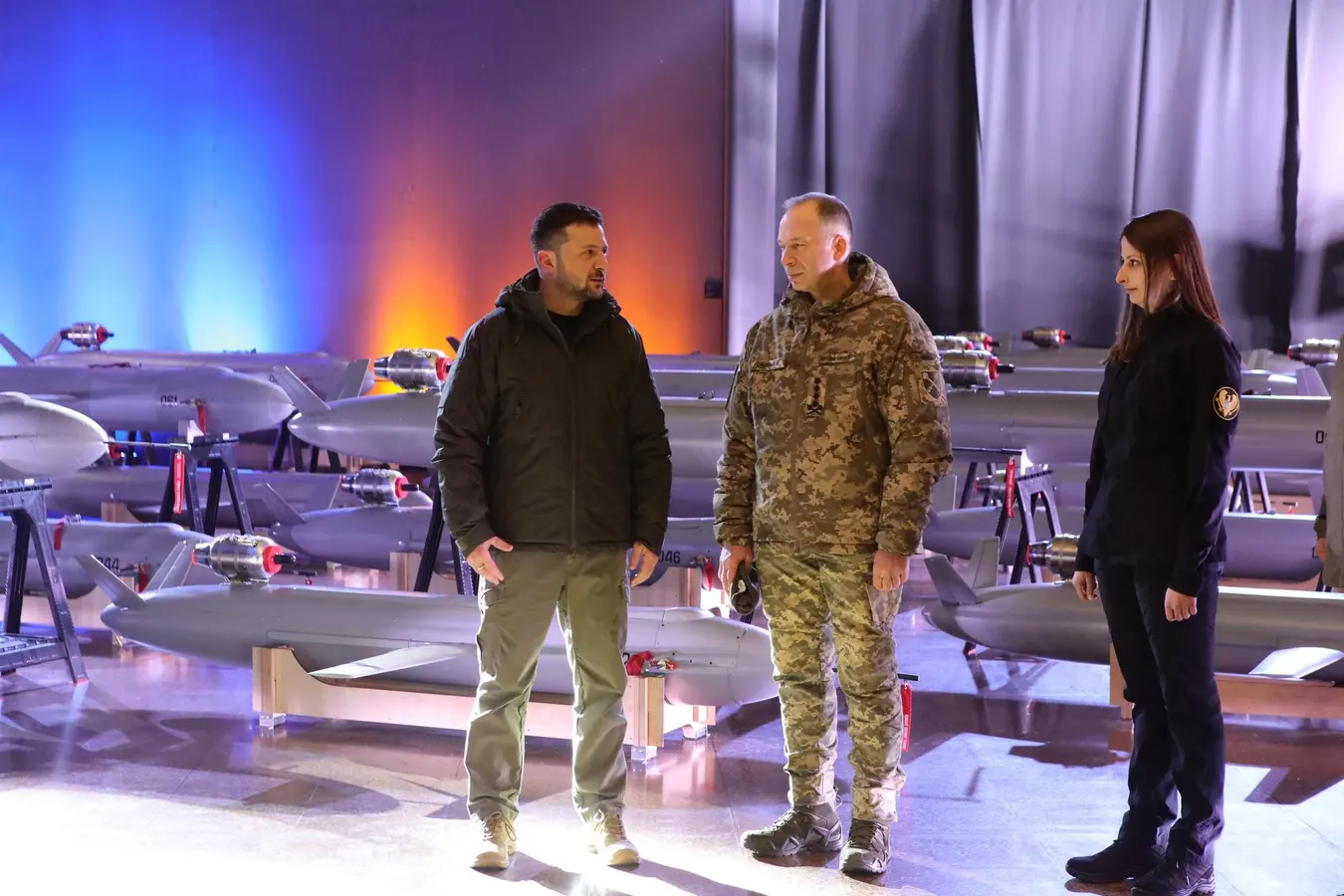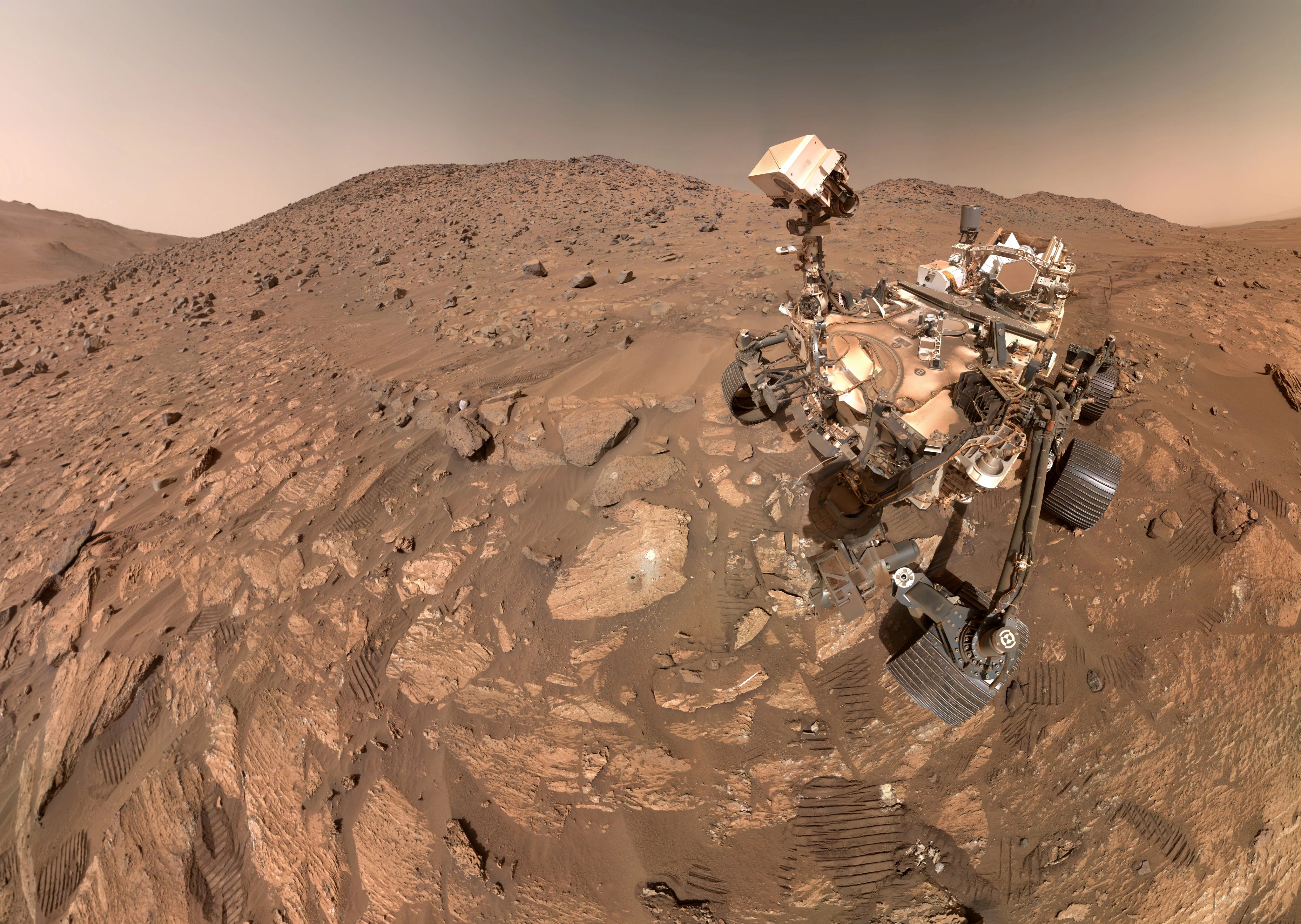By Contributor,David Kirichenko
Copyright forbes

In Kyiv, Ukraine, on December 6, 2024, President of Ukraine Volodymyr Zelenskyy, Commander-in-Chief of the Armed Forces of Ukraine Oleksandr Syrskyi, and Deputy Minister of Strategic Industries of Ukraine Anna Gvozdiar (L to R) attend the handover of the first batch of long-range Peklo (Hell) missile drones to the Defence Forces on the Day of the Armed Forces of Ukraine. Ukraine’s President Volodymyr Zelensky conveys the first batch of advanced Peklo missile drones to the military. During the event, it is reported that there have already been five successful uses. The Peklo missile drone, which has a strike range of 700 km and a speed of 700 km per hour, is launched into serial production. NO USE RUSSIA. NO USE BELARUS. (Photo by Ukrinform/NurPhoto via Getty Images)
NurPhoto via Getty Images
Kyiv is intensifying its air campaign, aiming not only to destroy Russian oil refineries but also to expose the vulnerabilities of the country’s elites. On September 9, a Ukrainian drone targeted Sochi on the Black Sea, just hours after President Vladimir Putin held meetings there.
On September 12, a Ukrainian drone struck Russia’s Leningrad region for the first time, hitting the Primorsk oil terminal near St. Petersburg and forcing a temporary suspension at the country’s largest crude port. The drone threat also shut down St. Petersburg’s Pulkovo Airport.
Ukraine’s drone offensive is showing results, intensifying pressure on the Kremlin as strikes deepen Russia’s fuel crisis and accelerate inflation. According to September data from the independent pollster Levada Center, a record 66% of respondents in Russia now say it is time to move toward peace negotiations, while just 27% support continuing military action – the lowest level ever recorded. In June, 58% also cited rising prices as their top concern.
While public frustration with the war is rising, elites in Moscow and St. Petersburg remain more resilient to disruption – for now. Yet frustration among ordinary Russians has not fully translated into elite vulnerability. “Moscow and St. Petersburg elites have a fairly high tolerance threshold for war-related disruptions and these strikes can become politically destabilizing only in the long-term,” says Maria Popova, associate professor of political science at McGill University.
Ukraine’s Drones Drive Fuel Crisis Across Russia
The country spans 11 different time zones, making its vastness its biggest weakness in defending against Ukrainian drone attacks. “Strikes on refineries, combined with attacks on railways, have disabled 17 to 21% of Russia’s refining capacity,” says Serhii Kuzan, chair of the Ukrainian Security and Cooperation Center. In the past week, Ukraine’s drones struck an oil refinery about 1,500 kilometers from the border.
MORE FOR YOU
Strikes on refineries are designed to choke off the Kremlin’s war revenues while exerting pressure on Russia’s already strained economy. “Fuel prices in Russia have risen by about 25%, with shortages especially acute in remote regions and Crimea. Ukrainian strikes highlight vulnerabilities in Russia’s economy and military, undermining propaganda claims of success and fueling public dissatisfaction,” Kuzan told me. This economic strain compounds the pressure already created by Western sanctions.
Such disruptions strike at the heart of the Kremlin’s war chest, threatening the oil and gas revenues that remain its most vital source of state financing. On September 14, Ukrainian President Volodymyr Zelensky called the strikes on Russia “the most effective sanctions.”
According to Reuters, Transneft – which handles over 80% of Russia’s oil – has already begun limiting producers’ ability to store crude in its pipelines and warned it may have to reduce intake altogether if drone strikes cause further damage.
At the same time, Western sanctions are squeezing Russia, forcing a return to 1990s-style barter as firms trade wheat and flax for Chinese cars and building materials. On September 15, Putin expressed frustration with economic officials as growth flatlined and budget shortfalls swelled to 4.2 trillion rubles – 150 times more than a year earlier.
Even Russia’s elites in Moscow and St. Petersburg are no longer insulated from the war’s impact, as nationwide fuel shortages are now spreading towards the capital.
Drone Strikes Disrupt Russian Businesses
Ukrainian long-range drones rely on Russian LTE networks for navigation and reconnaissance, which is why the Kremlin has resorted to mass mobile data shutdowns across dozens of regions. On May 9, Roskomnadzor cut internet access in 40 regions, or 60% of Russia, causing massive economic disruptions. Ukraine faces a similar problem from drones leveraging local networks. It has found hundreds of Russian drones carrying Ukrainian SIM cards, showing that Moscow exploits Ukrainian networks for guidance as well.
According to the Financial Times, a surge in Ukrainian drone strikes deep inside Russia has forced the Kremlin to impose widespread internet shutdowns, disrupting businesses, public services, and daily life for millions. One resident in the city of Vladimir was more positive about one benefit, stating, “When we meet up with friends, we talk more instead of being on our phones.”
These outages, concentrated around military and industrial hubs, have tripled since June. The Internet Protection Society estimates that every hour of nationwide internet blackout costs Russia 46.4 billion rubles ($557 million), including 9.6 billion rubles ($115 million) in Moscow alone. In mid-September, the Moscow Times reported that Russia’s central bank also flagged a surge in cash hoarding, with liquidity flowing out of banks as daily internet shutdowns push Russians to favor rubles in hand over digital payments.
Moscow And St. Petersburg Are Targets for Ukraine
Between January and May, Russian airports have been shut down 217 times due to Ukrainian drone attacks – more than in all of 2023 and 2024 combined – disrupting tens of thousands of passengers and costing airlines more than 1 billion rubles, according to Novaya Gazeta Europe. Moscow has borne the brunt of these closures.
In May, Ukrainian drone strikes plunged Russian aviation into chaos. Over half of flights at Moscow’s Vnukovo and Sheremetyevo were disrupted, while Domodedovo saw 43% of flights delayed by an average of more than five hours.
By July, major Ukrainian drone strikes forced mass flight cancellations and delays at Moscow’s airports, leaving thousands stranded. Videos shared by Russian media showed passengers sleeping on the floors of Sheremetyevo, the country’s busiest airport, as long queues stretched through the terminals.
The disruption is no accident. Kyiv is now timing its drone swarms for maximum disruption. Sergey Vakulenko, Senior Fellow at the Carnegie Russia Eurasia Center, wrote that drone attacks have disrupted flights and trains, forcing more Russians onto the roads and pushing up gasoline demand, particularly on the busy routes between Moscow and the Black Sea coast.
Targeting cities like Moscow and St. Petersburg delivers both psychological and battlefield effects. The heavier the pressure on these urban centers, the greater the urgency to divert scarce air defenses away from the front. A source in Ukraine’s military intelligence told Ukrainska Pravda that “from now on, military facilities in St. Petersburg and the Leningrad region are within reach of Ukrainian forces.”
Beyond the battlefield, these strikes are also reshaping how Russia is perceived abroad. Writing for the Carnegie Endowment for International Peace in September 2023, Ruslan Suleymanov noted that many Afghans in Kabul “now see Russia as a dangerous place where drones regularly strike the capital.”
Speaking at the Yalta European Strategy conference in Kyiv on September 13, Keith Kellogg, President Trump’s special envoy for Ukraine, said Trump asked him in the Oval Office whether Russia is winning, and he replied, “No.”
Over time, Ukraine is proving not only its growing technological strength but also its capacity to shape conditions that increase pressure on Vladimir Putin to eventually come to the negotiating table. The Trump administration now has an opportunity to pair economic sanctions with Kyiv’s kinetic campaign to bring Moscow to the table.
As Ukraine ramps up production of its long-range drone and missile arsenal, the tempo of attacks will rise. “Modern war is a war of resources, and Ukraine is a David that tries to find Goliath’s weaknesses,” said Oleksiy Reznikov, Ukraine’s former defense minister.
Editorial StandardsReprints & Permissions



